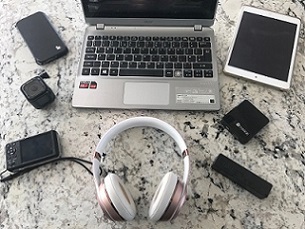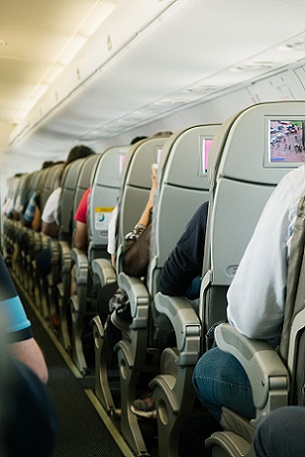 All these personal electronic devices are powered by lithium ion batteries
All these personal electronic devices are powered by lithium ion batteries
 An AvSax lithium battery fire containment bag
An AvSax lithium battery fire containment bag
 The last place you’d want a lithium battery fire is in the confined space of an aircraft
The last place you’d want a lithium battery fire is in the confined space of an aircraft
Here’s a simple guide as to why lithium batteries catch fire.
They now power all our personal electronic devices including mobiles phones, vapes, laptops, iPads – the list is endless – but they can and do go wrong.
When that happens they overheat and can catch fire or even explode.
But how and why do lithium batteries catch fire?
Well, inside every lithium battery are two electrodes – one negative and one positive – separated by a thin sheet of plastic.
When the battery is powering a device the lithium ions are pushed from the negative to the positive electrodes through the permeable plastic separator.
When the battery is being charged up the lithium ions go the other way from the positive to the negative.
The problem happens when the plastic separator fails which allows the two electrodes to come into contact with one another and overheat. At this point all the electricity is suddenly released with the super-charged heat quickly passing from cell to cell in a process called thermal runaway.
This happens incredibly quickly and produces exceptionally high temperatures – up to 900°C (1652°F) – which can even be enough to cause the battery to explode. A more technical term some use for this is ‘venting with flame.’
The tell-tale signs that a battery is about to go into thermal runaway include the device feeling hot to touch, swelling, cracking or giving off a toxic, burning smell.
A lot of these fires are caused by the device being powered by cheap batteries or chargers bought on the internet that don’t meet safety standards. It can also happen if the device becomes damaged – perhaps dropped or crushed.
One of the riskiest places this can happen is in the confined space of a passenger aircraft. The airlines are now so concerned, warnings about lithium batteries have become part of the safety briefing. Cabin crew urge passengers to let them know immediately if the device starts to overheat or emit smoke or if passengers have lost their phones in their seats. The fear is if they move their seat to try to find the missing phone they may accidentally crush it, sending the phone into thermal runaway.
This is why safety-conscious airline operators now have special lithium battery fire containment bags on board and the best-selling one by far is the award-winning AvSax (www.avsax.com) which are now on more than 16,770 aircraft operated by over 100 airline companies worldwide.
They have been used 33 times to deal with emergencies since the start of 2017 and every time they have been deployed the aircraft has been able to complete its journey safely with no need to divert or make an emergency landing.
AvSax, invented by UK-based Environmental Defence Systems, won the prestigious Queen’s Award for Enterprise in the UK in 2018, the highest award any business can get.
Many air ambulance helicopters in the UK now carry AvSax. More than 20 helicopters operated by specialist aerial emergency medical services company Babcock were equipped with AvSax following a detailed look into the possible risks posed by lithium-ion batteries on aircraft.
The danger posed by lithium batteries means they must always be carried in the cabin so the crew can deal with any fire should the worst happen.
They must never be in the luggage hold as automatic fire suppression systems could struggle to cope with a fire of such intensity. The batteries and devices would be surrounded by clothes and other combustible materials so any fire could quickly take hold.